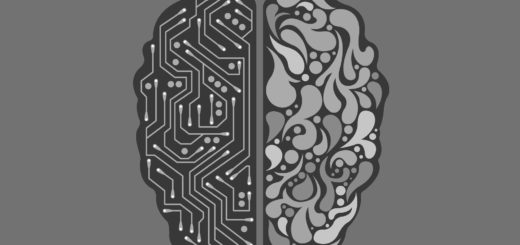A Price For Love: Grief And Its Physical Manifestations

While many people think of grief as a response to loss and death, that is not always the case. You can grieve when your body is trying to rebalance in response to rhythms’ changes. Maybe you just moved into a new city or you decided it was best to shut down your business. Perhaps in a crazy sci-fi scenario, a viral pandemic knocked on your door and told you to forget everything you knew about social interactions. In this respect; the emotions you may be feeling are related to grief and all the responses that the process of bereavement can trigger. The purpose of this article is not to devalue grief related to death but rather outline different forms of grief and the potentially unappreciated health risks that accompany it.
Grief is multidimensional and has been portrayed as a response to a stressor, as an adaptive response to natural events and the result of psychobiological regulators imbalance. The unbounded definitions of grief are attributed to the heterogeneity of both symptoms and stressors that stimulate its expression. Dyspnoea and crying are acute grief symptoms that last a few minutes at a time while chronic grief symptoms include insomnia, chronic fatigue, and appetite alterations which can last for months 1.
Now if somebody said you could die of a broken heart, you would probably think this person lost their mind. However, a phenomenon known as the ‘widowhood effect’ might prove you wrong. According to epidemiologic studies, there is a strong link between sudden cardiac arrests and increased mortality rates in people who experience grief in the first six months after their loss 2. Insight into current knowledge on the neuroregulatory mechanisms involved in grief and similar situations reveal its association with the functions of the endocrine, immune, and autonomic nervous systems.
When you stub your toe on the corner of the bed, you may be tempted to take your eyeballs out to compensate for the pain you experience. In scientific terms, when emotional states like rage, fear and stress blow up, the autonomic nervous system (ANS) and its wide distribution of nerve fibres are activated. In a similar way, stressors like grief have the potential to induce the disorganised activity of the fibrillated heart which in turn may disrupt the blood circulation, causing the brain and lungs to fail. Therefore, the association of grief with the ‘widowhood effect’ was founded on the involvement of the autonomic system in the regulation of heart rate and blood circulation. Further clinical evidence is required to validate whether emotionally charged situations like grief can potentially cause cardiac arrests or predispose individuals into such health risks.
During emotionally charged events, hormones like 17-hydroxycorticosteroids (17-OHCS), prolactin, growth hormone, and cortisol are naturally increased while hormones like testosterone and thyrotropin seem to decrease. Upregulation and downregulation of certain hormones under different emotional charges are normal and serve as the natural adaptive mechanisms aiming to rebalance and respond to changes. However, the association of grief with health-compromising effects is established when such mechanisms turn into maladaptive attempts to keep one’s head above water at the time of dealing with strenuous emotional states.
The autocrine nervous system, endocrine system, and the immune system are the three foundational pillars that constitute the ‘psychoneuroimmunoendocrine system’. These three pillars can function independently but also interweave their responses to psychological events. During emotional distress, endocrinological and neurohumoral responses are activated in the form of a hormonal ‘dance-off’. Stressors act on the hypothalamic-pituitary-adrenal (HPA) axis, our central stress response centre, and release the ‘Kraken’ of hormones, a large peptide known as pro-opio-melanocortin (POMC) 3. This large peptide is a composition of smaller peptides that act as couriers and deliver messages to systems such as the metabolic and the immune system. Hormonal signals are believed to transiently suppress the immune system in order to prevent endogenous or exogenous antigens from constitutively activating it. In the process of grieving, this metabolic preparation allows the immune system to focus on dealing with the ‘threat’ of loss in a staged and preparatory manner 4.
As such evidence on the immune system falls into place, it is easier to imagine how the constant activation of the psychoneuroimmunoendocrine system can turn maladaptive. In emotionally charged situations like grief, it is especially easy for responsive mechanisms, like the HPA axis, to be activated in search of relief. However, faults in this system, such as upregulated immunosuppression mechanisms are an example of how the process of dealing with chronic grief can compromise health. Tumour susceptibility in hormone-sensitive cancers was suggested as a possible result of abnormal immunosuppression along with increased HPA axis activity 5. There is by no means enough clinical data to support that grief is the causative agent for cancer.
A 2020-relatable theory that prompted me to learn more about grief was one that links the biological effects of grief with the disruption of the biological rhythms. The theory supports that social relationships may have a key role in the management of the responses to bereavement. Along with losing a beloved person, someone is losing the entertaining stimuli associated with that person. Therefore, this deficiency can deregulate the normal biological timing of the individual experiencing loss. As a matter of fact, there is evidence suggesting that social relationships are key somatosensory regulators of the biological rhythms and not natural states like temperature and light. Now, if you ever lived together with your “gals”, you might have experienced a special type of bonding, also known as menstrual syncing. Period synchronisation is an example of a socially regulated influence controlling a biological system such as the menstrual system. While the mechanism in humans remains anecdotally proven, it is believed to be olfactory-mediated in other species 6.
With all of our biological systems being interconnected, it is reasonable to assume that such a disruption of biological rhythms can in turn affect the endocrine and immune systems’ rhythms. Both of them have a normal cycle, also known as periodicity. Cortisol, catecholamine, and most hormones in the endocrine system appear to have a cycle that is directly influenced by environmental factors. Similarly, the immune system’s periodicity interacts with the endocrine system’s cycle. During the sleep-wake cycle, cortisol secretions have been associated with the alterations in the number of lymphocytes produced by the immune system. Now after reading this, is it crazy to think of 2020 (and possibly 2021) as a year of ultimate chronic grief, one when any biological rhythms are deeply disturbed and as a cost on our mental and physical health that is unaccounted for?
As mastering the “art” of social distancing, self-isolating, and butchering social interactions are a prerequisite for entering 2021, it is considerably scary to think of our biological rhythms’ deregulation if their control is indeed based on social interactions. The fire of linking grief with health concerns has already been kindled and it would be refreshing to witness more scientists devoted to further exploration of this peculiar relationship. In our turn, while we pay the price for love by naturally grieving over our bygone lives and trying to re-establish our biological rhythms, we must raise awareness on the effects the current situation can have on both our mental and physical health.
This article was specialist edited by Adriana Alcaraz-Sanchez and copy-edited by Dzachary Zainudden.










